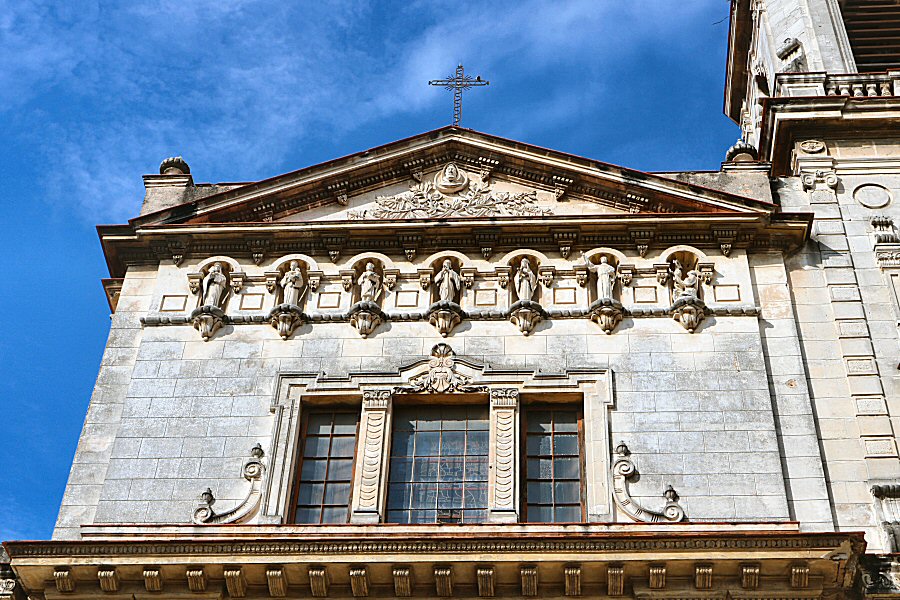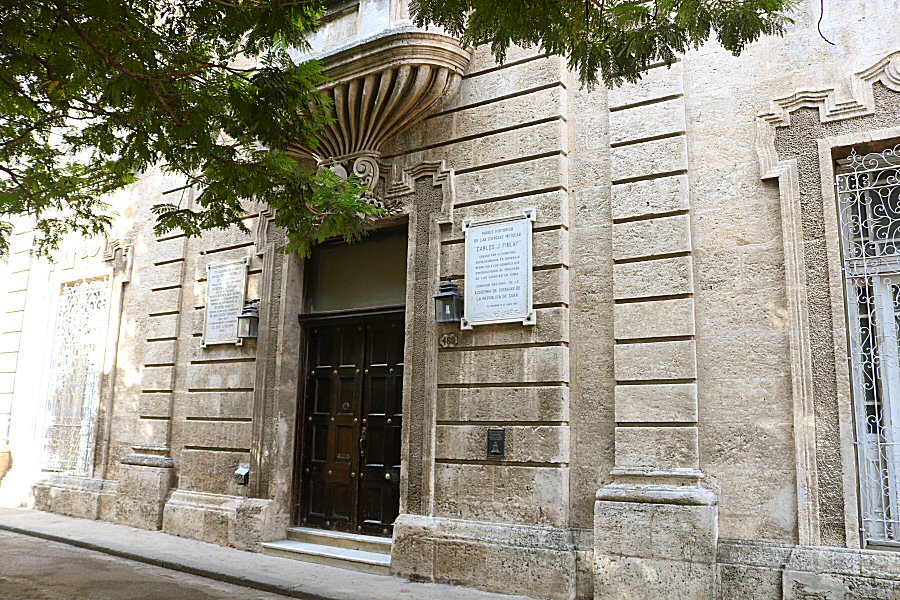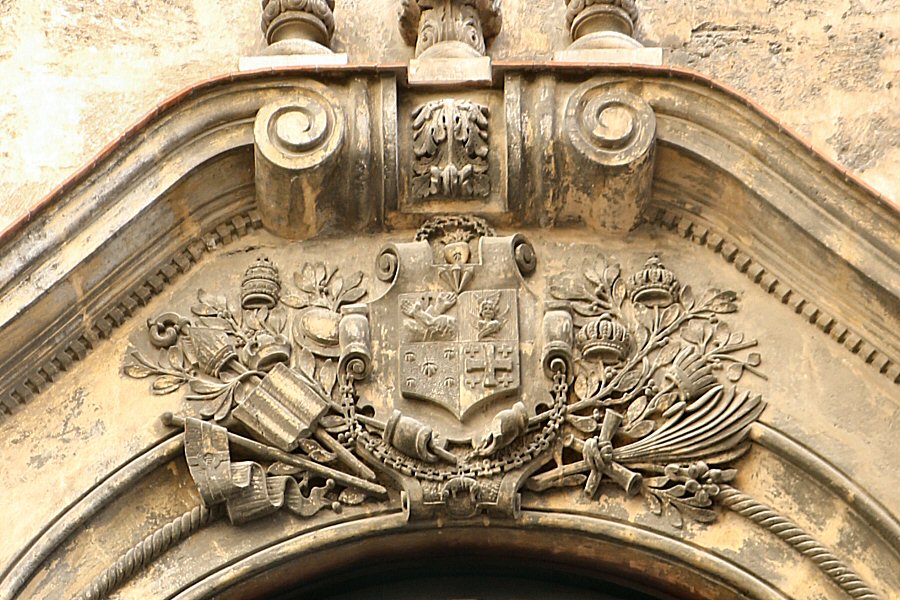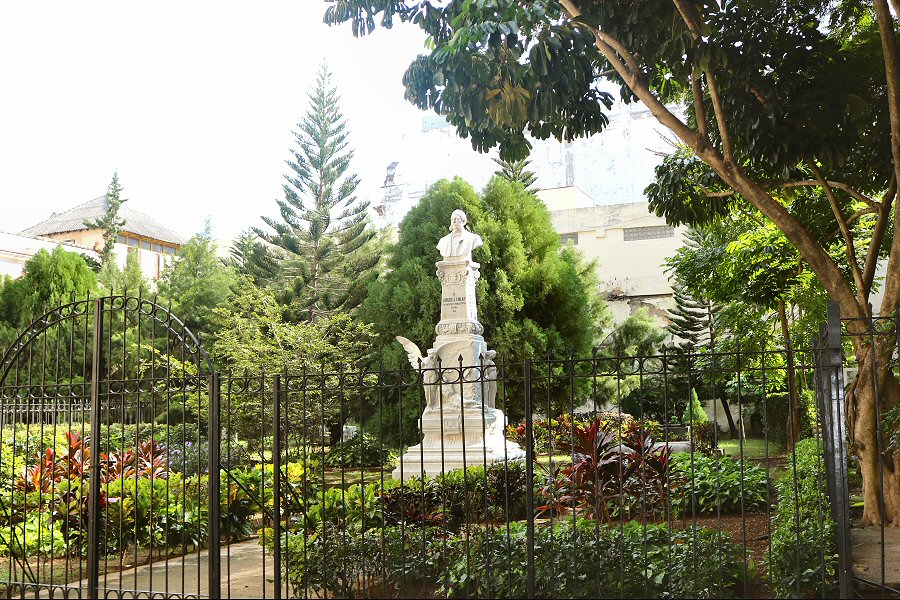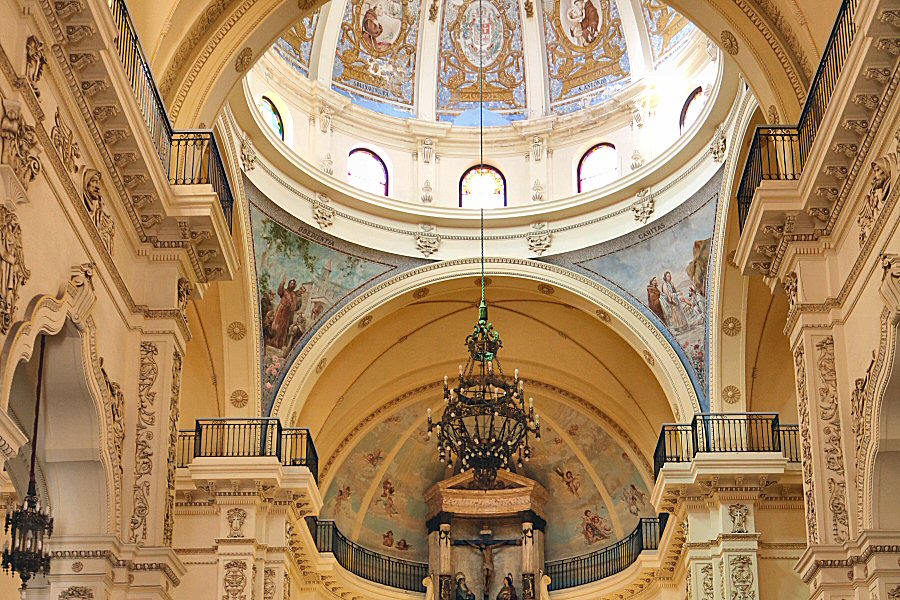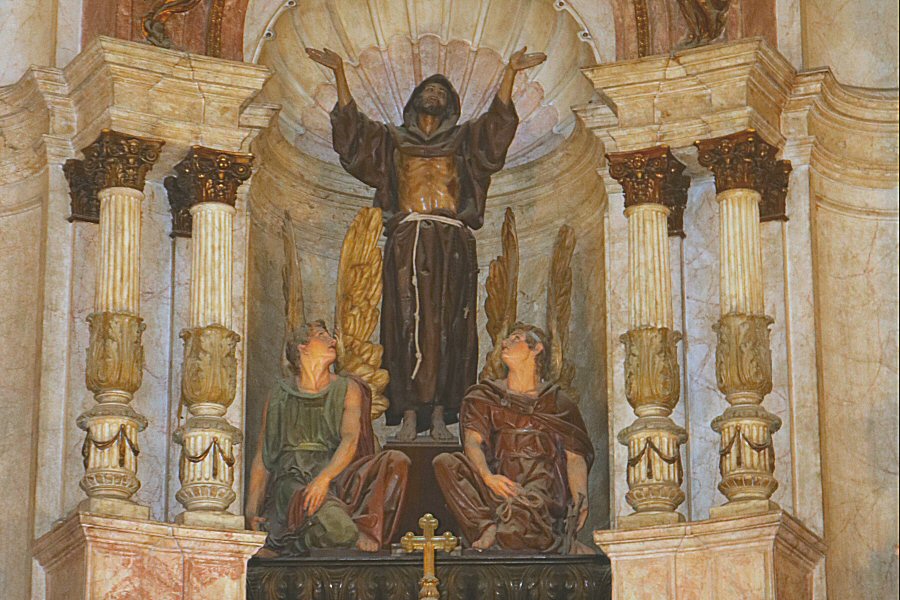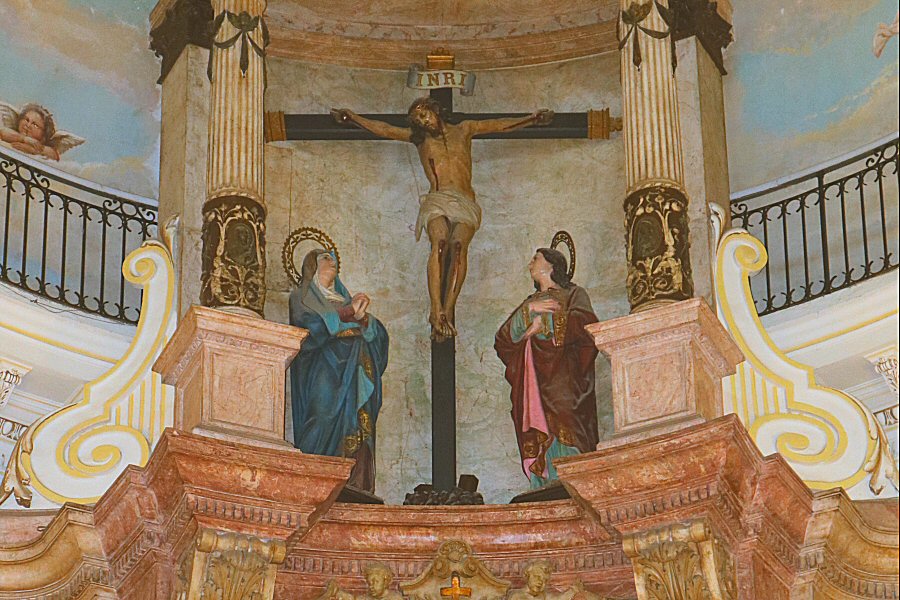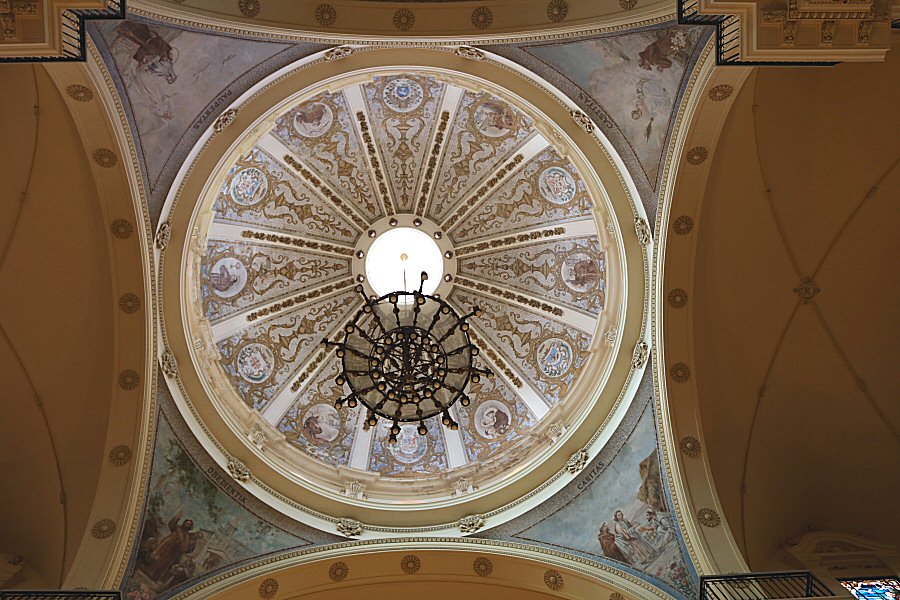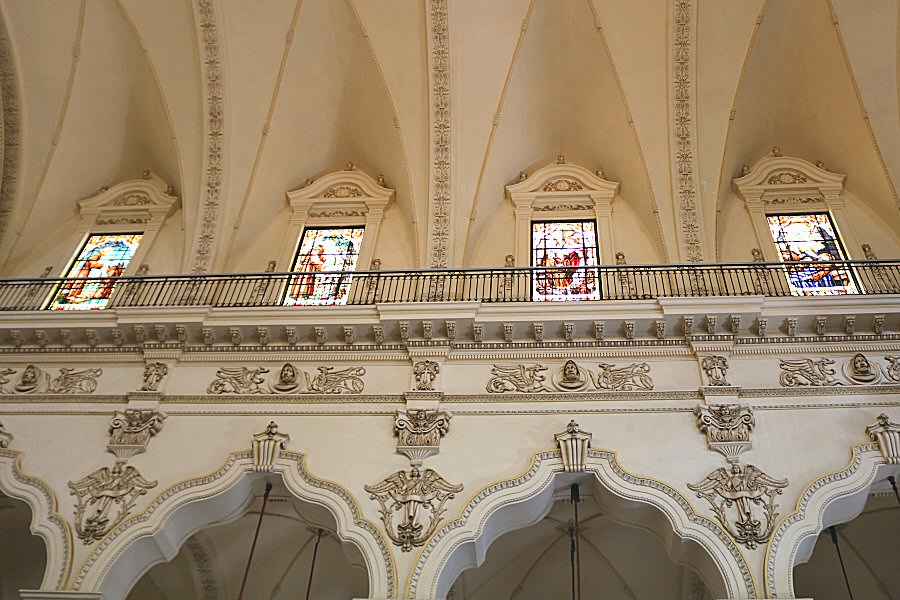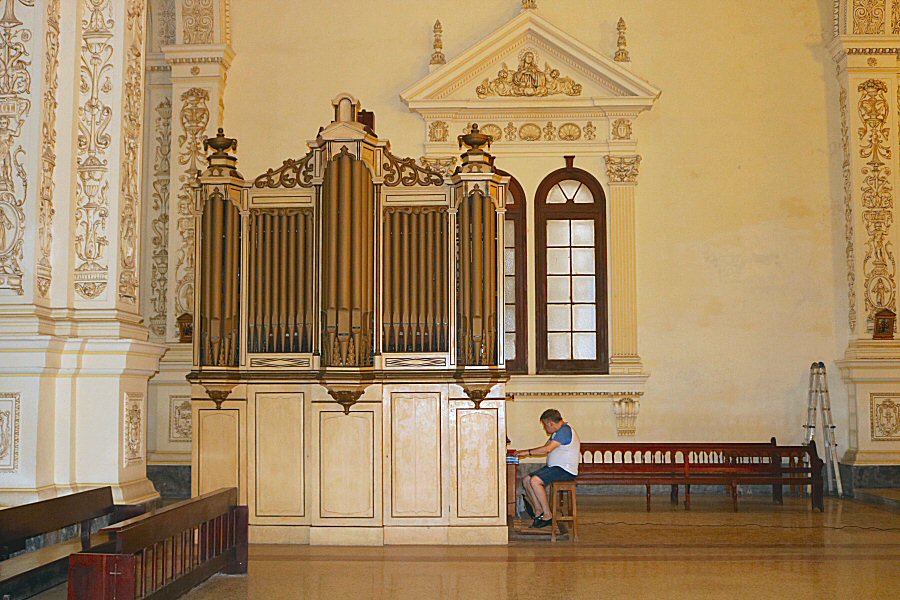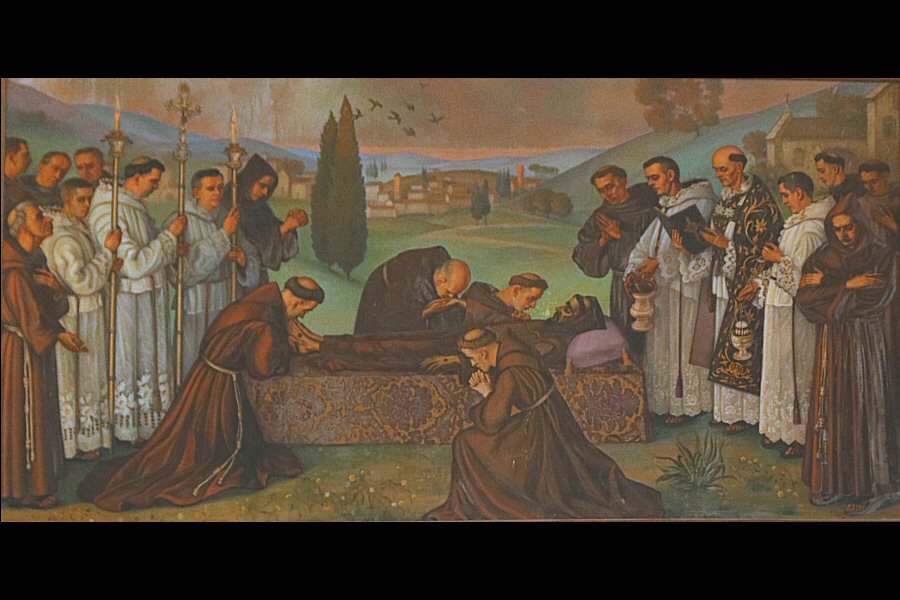
Convento de San Augustín is located on
the Cuba street where it intersects with the Amargura street.
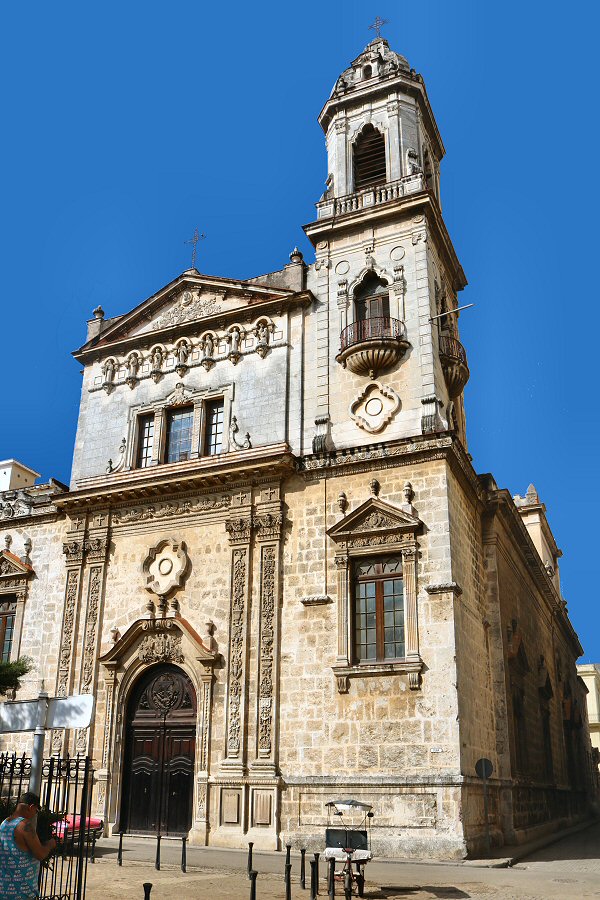
 The first group of the Order of
San Agustin arrived in Mexico, after the bloody subjugation
of the Aztec Mexico by Spanish Hernán Cortés Monroy in
1520s. Cortés that had sailed out from Santiago de Cuba for
the first excursion along the shoreline of Mexico, is
remembered as being the man largely responsible for the
decimation of the Aztec civilization. Years later, the
Augustinians friars set the foot on Cuba first in 1588,
arriving from Mexico. The small missionary group settled
around the streets of Cuba and Amargura, and waited for an
opportunity to establish their convent.
The first group of the Order of
San Agustin arrived in Mexico, after the bloody subjugation
of the Aztec Mexico by Spanish Hernán Cortés Monroy in
1520s. Cortés that had sailed out from Santiago de Cuba for
the first excursion along the shoreline of Mexico, is
remembered as being the man largely responsible for the
decimation of the Aztec civilization. Years later, the
Augustinians friars set the foot on Cuba first in 1588,
arriving from Mexico. The small missionary group settled
around the streets of Cuba and Amargura, and waited for an
opportunity to establish their convent.
By the help of the Spanish Bishop
Juan de las Cabezas Altamirano, the Augustinian friars
established their first convent in 1608. It was a modest
chapel and dedicated to Our Lady of the Candlemas, occupying
the land where the Convento de San Augustín stands today. In
1633, the construction of a spacious church with a large
sacristy was very advanced (in 1628 it was opened to the
cult), but the building was completed in 1660, by using all
the money, collected as alms. The church consisted of the
main nave and the collateral with the tower on its north
side, both oriented both from east to west.
The church achieved its brilliance in the second half of the 17th century. By 1800s it had already three wide and bright naves. Behind the church, towards the Aguiar street, there was the chapel of the Third Augustinians, preceded by a small atrium. The convent was composed of a simple cloister and a courtyard and it housed the offices for the service of the community, consisting of about thirty holy men living there. The church was devoted to different brotherhoods, like Our Lady of the Candlemas, Our Lady of the Immaculate Conception, Saint Francis of Sales and Our Lady of Victory.
The Order of Saint
Augustine is a Catholic religious order,
founded in 1244 by bringing
together several orders in the Tuscany region
that were following the Rule of St. Augustine,
written by St. Augustine of Hippo in the 5th
century.
The prestigious Academia Nacional
de Bellas Artes San Alejandro was established in the
Convento de San Augustin in 1818. The workshop and studies
of the school were installed in the church until the school
was moved to a building in the Dragones street in 1856.
In 1842, the Order of San Agustin
disappeared, so that the building became the property of the
Third Order of Saint Francis and two years later, in 1844,
it passed to the hands of the First Order of Saint Francis.
During this period the church was remodeled, and some
extensions were made, acquiring the physiognomy that has
arrived until the present time. That’s why it has been
called Convento de San Francisco
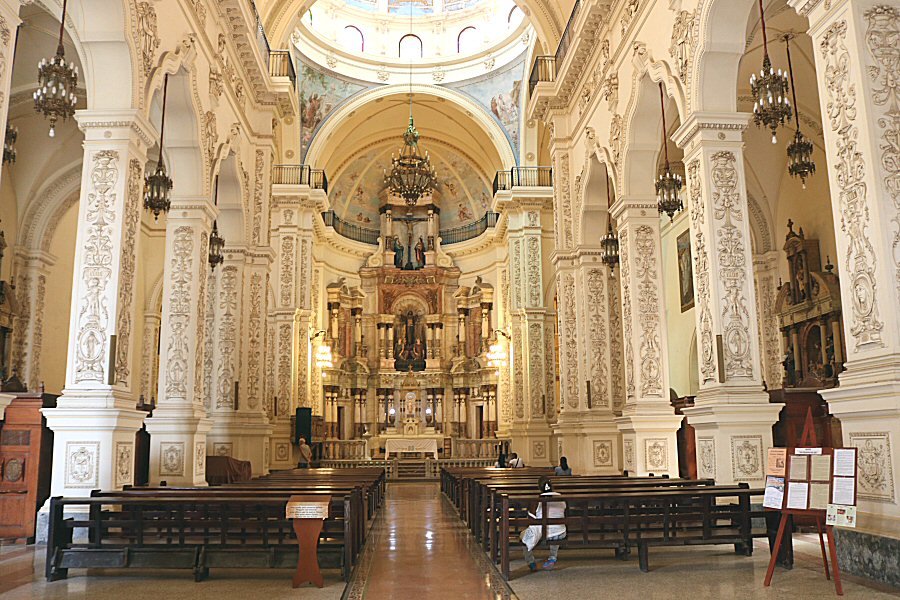
Nowadays, the church continues to be the property of the Fransiscan Order, but the convent is divided. The eastern part of the convent on the Cuba street belongs to the Academia de Sciencias de Cuba (Academy of Sciences of Cuba), including the Museo Histórico de Las Ciencias Medicas Carlos J. Finlay, and the northern part, including the atrium and the chapel of the Third Augustinians, is occupied by the Casa de Cultura Julián del Casal.
A well and some burials were discovered during the archeological excavations in the area of the old atrium.
The Mexican influence, noticeable on the waved crag made out of curves and concavities, is obvious at the facade and the tower of the church.
There is a beautiful altarpiece by
Miguel Consistre. The decoration of the dome and the
stained-glass windows are outstanding.

